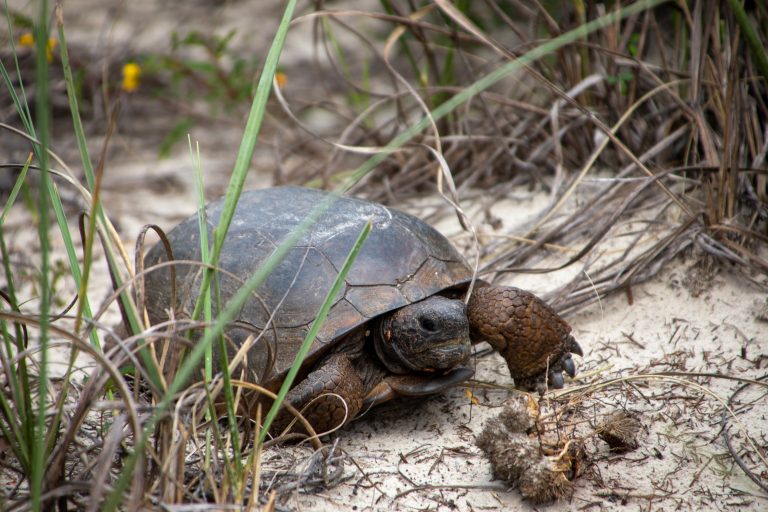Habitat loss and fragmentation are some of the primary causes of declining plant and animal populations. The Florida Wildlife Corridor protects almost 700 different plant and animal species by conserving and connecting habitats all over the state. This includes the mighty Florida Panther, The West Indian Manatee, and the Gopher Tortoise. This blog dives into the importance of the corridor and how it supports conservation efforts.

Image: Unsplash by Dawn Mcdonald
The Florida Wildlife Corridor Act
Last April, Florida lawmakers passed The Florida Wildlife Corridor Act. This secured over $400 million in funding to protect interconnected natural areas in Florida. The Florida Wildlife Corridor works to provide connections between different green spaces such as national parks, state forests, rivers and streams. Furthermore, around half of the corridor is made up of working lands like ranchlands and timberland. This provides wildlife habitat while also sustaining agricultural practices, one of Florida’s biggest economic resources. By connecting these habitats, the corridor allows wildlife to roam more freely and expand their habitat past their own ‘patch’ of habitat.

Image: Unsplash by Alex Irimia
Through various monetary incentives, the act intends to prevent further fragmentation of wildlife habitats. These efforts also help to safeguard clean water and air, protect agricultural lands from development, and promote recreational access to natural areas. One way the act encourages the preservation of corridor spaces is through conservation easements — an agreement in which landowners sell their development rights while continuing to use their land for agriculture. The easements are intended to help preserve critical green spaces while avoiding further development in a fast-growing state. This can help the Florida Wildlife Corridor conserve some of their “missing links,” that would connect all of Florida’s existing conservation lands and national parks into one big statewide ecological network.
What is a Wildlife Corridor?
A wildlife corridor is defined as a relatively narrow patch of habitat that connects two or more larger patches of habitat or makes it easier to move between them. It serves the initial purpose of providing wildlife with a path to more easily move between different habitat patches. This has ecological benefits like increasing the amount and diversity of available habitat, particularly important for wide-ranging species like the Florida Panther. Other ecological benefits include the encouragement of gene flow and interbreeding between different local populations. This decreases inbreeding in local populations. Inbreeding can lead to genetic disorders that contribute to higher mortality rates in species. Wildlife corridors can also help species to have an escape route for natural disasters in their primary habitat.
The Inspiration
Joe Guthrie and Wade Ulrey first started tracking a black bear, given the name M34, to study bear movements and find patterns to explain how bear populations stay afloat in a human-dominated landscape. Most of the black bear populations in Florida are isolated from each other due to human development and habitat loss. M34 kept to his primary habitat for a while until breeding season, where he traveled over 500 miles in 8 weeks! This showed incredible habitat potential for Florida’s landscape and highlighted the need for dispersal routes for wide-ranging animals like bears. The idea of habitat connectivity was not a new one, but studying this bear’s migration just gave new legitimacy to the concept and inspired researchers to do more. M34’s data and other research on black bears’ movement helped build on the idea that Florida must maintain ecological connectedness.

Image: Unsplash by John Thomas
Conclusion
Not only do wildlife corridors help to prevent species decline, they also safeguard our clean water and air, protect agricultural lands from development, and promote recreational access to natural areas. Protecting natural habitats keeps animals and humans safe alike, ensuring that these animals don’t have to move into our neighborhoods, and can keep exploring their own.
Florida has one of the most unique biodiversity and habitats in the country. I know that the more I learn about Florida’s natural history, the more amazed I am at it. By connecting our conservation lands into a statewide ecological network, we can see what beautiful habitat Florida is capable of hosting for humans and animals. Learn more on the Florida Wildlife Corridor’s website and even see how you can help.
Sources
https://www.floridamuseum.ufl.edu/earth-systems/blog/the-florida-wildlife-corridor-act-what-is-it-and-what-changes-will-it-bring/
https://scholarworks.umt.edu/etd/4736?utm_source=scholarworks.umt.edu%2Fetd%2F4736&utm_medium=PDF&utm_campaign=PDFCoverPages
Inspired By A Bear








